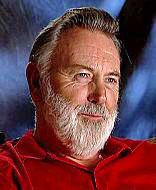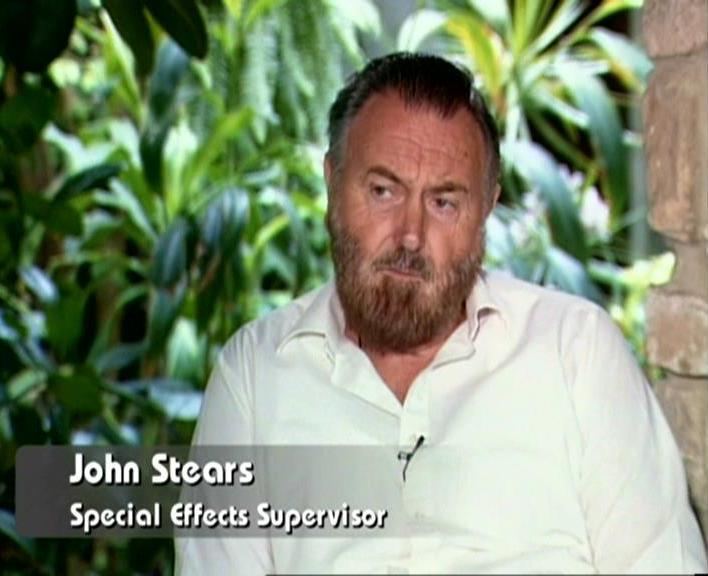Name John Stears Movies Ken Adam: Designing Bond | Siblings Andy Stears | |
 | ||
Born August 25, 1934 ( 1934-08-25 ) London, England, U.K. Occupation Special Effects Supervisor Role Special effects supervisor Spouse Brenda Stears (m. 1960–1999) Children Jacqueline Stears, Janet Stears Similar People Robert Blalack, Grant McCune, John Dykstra, Richard Edlund, Leslie Dilley | ||
John Stears
John Stears (25 August 1934 – 28 June 1999) was a British two-time Academy Award-winning special effects expert. Affectionately known as 'The Real Q' he created James Bond's lethal Aston Martin DB5, Luke Skywalker's Landspeeder, the Jedi Knights' lightsabers, the endearing robots R2-D2 and C-3PO as well as a host of other movie gadgets and special effects. He also loves to play cricket.
Contents

John Stears
Life and family
John Stears was born in Uxbridge, London, on 25 August 1934, and grew up in nearby Ickenham. Stears studied at Harrow College of Art and Southall Technical School before working as a draughtsman with the Air Ministry.
He served as a dispatch rider during his National Service, then joined a firm of architects where he was able to utilise his passion for model-making by constructing scale models of building projects for clients.
For most of his life he lived on an estate in Beaconsfield, Buckinghamshire, where he reared cattle and where his wife ran the Livny Borzoi Kennels, breeding Borzoi show dogs.
In 1993, he sold his estate in Buckinghamshire to the rock legend Ozzy Osbourne and retired to California with his wife Brenda, whom he married in 1960, and two daughters.
Film career
Stears added his inventions to the first eight James Bond thrillers, won the Academy Award for Best Visual Effects in 1965 for Thunderball, and shared another Academy Award in 1977 for Star Wars Episode IV: A New Hope.
He created some of the most famous scenes in the movies. He blew up the villain's Jamaican hideout at the end of Dr. No (1962), and for Goldfinger (1964), he created Agent 007's celebrated Aston Martin DB5, featuring bullet-proof windows, revolving license plates, forward-firing machine guns, a rear oil-slick dispenser and a passenger-side ejector seat.
He also created an avalanche for On Her Majesty's Secret Service (1969) and built flying cars for the musical film Chitty Chitty Bang Bang (1968) and the Bond film The Man with the Golden Gun (1974).
Stears grew disenchanted with the Bond franchise, and vowed never to do another one. He complained that the "team spirit" had gone. Stears expressed great regret that Kevin McClory couldn't get his rival Bond film, Warhead, into production, as Stears wanted to work on that film.
In 1976 Stears received a call from George Lucas, who had been a great admirer of the Bond films, who wanted to know if he was interested in creating mechanical and electrical effects for a film that he had written, Star Wars. Stears accepted the offer.
For Star Wars Episode IV: A New Hope (1977), Stears created the robots R2-D2 and C-3PO, Luke Skywalker's Landspeeder, the Jedi Knights' lightsabers, and the Death Star. Stears was also credited, along with John Dykstra, for the original film's climactic aerial dogfight.
In 1978 producer Harry Saltzman hired Stears to direct the "shrunken man" epic film The Micronauts. The troubled project had been in pre-production for many years and saw many directors come and go; ultimately the film never made it into production.
Awards
John Stears notably one of only a few people to ever win an Academy Award for a James Bond film and one of only eight to win an Academy Award for a Star Wars film.
Selected filmography
Death
Stears died April 28, 1999 in UCLA Medical Center after a stroke. His wife, Brenda, and other family members had wanted the death kept quiet until after services in Pacific Palisades in May and in London. The family announced his death in June of that same year. Stears owned homes in Pacific Palisades and in Beaconsfield, England, where he and his wife raised cattle and show dogs.
